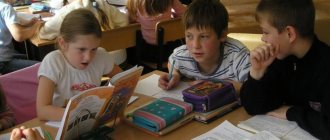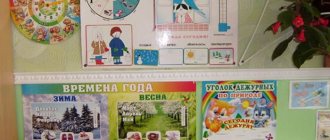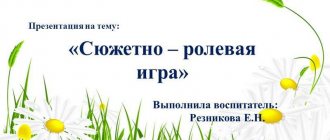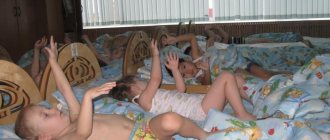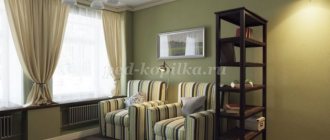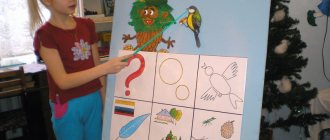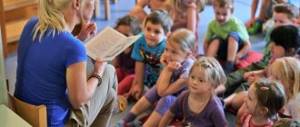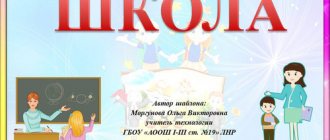What to wear for a walk or in a group
1. For a group, choose clothes made from breathable natural fabrics, preferably cotton. Boys - a T-shirt and shorts, girls - a dress or shorts with T-shirts. By the way, it’s better to sign all your clothes with name stickers so as not to lose or wear someone else’s.
2. In spring and autumn, lightweight rubber boots with removable insulation will come in handy: you can carry them with you or leave them in the locker room.
3. In the cold season and in damp conditions, the child should have replaceable mittens or gloves (preferably two pairs), because during a walk one pair will definitely get wet - and a spare one will come in handy.
4. In winter, a hat-helmet will replace a child’s simple hat and scarf - and the ears are always closed, and the neck will not get cold.
5. It is better to take a one-piece winter overalls, so that during active games on the street you do not get a cold in the lower back (although the debate about which overalls is better - one-piece or separate ones - is still raging).
Choose clothes that are as comfortable as possible; do not put things on your child with complex fasteners or tight fastenings. Give preference to things that the baby will put on correctly the first time, and most importantly, himself.
Educational games in kindergarten
Training sessions and simple communication are, of course, good. It is impossible to imagine the development of a child without games. In kindergarten, entertainment for children is carefully selected, focusing on their tastes and needs.
Mostly children prefer role-playing games.
- Salon. Not only girls play this game. Some boys also want to show their imagination and create a masterpiece on the head of a classmate or teacher.
- Shop. A well-organized “workplace” will allow children to play the role of a buyer or seller and understand the essence of commodity-money relations.
- House. Imitating a living space helps children feel like they are in their parents’ shoes. This develops responsibility, thriftiness, and the ability to care for loved ones.
- Cafe. A great game for introducing a child to the professions of a cook and waiter. She can teach politeness and accuracy. In this game, children learn the basics of table setting.
- Theater. In a group, children usually play puppet theater. Often they come up with a play themselves, assign roles, stage performances, and show them to the teacher and other children. This develops fine motor skills, speech and imagination.
We can say that this is a basic set of games. But there are also those classes that are conducted by the teacher from time to time and with the whole group at once. This is the well-known game “Broken Phone”, “Edible-Inedible”, “Associations” (or “Crocodile”) and others.
It turns out that all the child’s activities in kindergarten come down to alternating physical activity, learning, development and relaxation.
What to put in your locker
A child’s locker in kindergarten is small, so there should be only the most necessary things:
- Diapers for walks (relevant for nurseries). In kindergarten, especially during the adaptation period, a baby may get busy playing and not notice when it wants to go to the toilet. Therefore, up to 2 years old, ask the teacher to put on a diaper for your child for walks.
- Uniform for physical education : at the request of the kindergarten, this can be Czech shoes, sneakers or sneakers with shorts and a T-shirt or a gymnastics leotard for girls. Teachers almost always ask to bring simple black shorts and a white T-shirt. But in some kindergartens, the color of the T-shirt is the identification mark of the group, so check this point in advance at the parent meeting.
- Tights , which a child can wear outside under his pants or in a group if the room is cool.
- While the child is small, be sure to have three or four pairs of panties . For an older child, one is enough.
- Replacement T-shirts with shorts or dresses: for children - 3-4 sets, for children over three years old - 1-2 sets.
- Socks . Some white ones are for physical education, and another pair of any thin ones to replace after walks.
- Shoes for the group : sandals or shoes with Velcro fastening so that the child can put them on himself. The sole must be white, otherwise black stripes will remain on the floor.
- Pajamas for daytime sleep (they are usually stored not in a locker, but directly on the child’s crib).
- Handkerchief : not only in the closet, but also in the pocket of the child’s outerwear.
- Comb , especially for girls and boys with full hair. In kindergarten, children are taught to look neat.
- A bag in which you can put soiled or wet clothes.
Under no circumstances leave food (candy, juice, chocolate, cookies), much less medicine, in the cabinet.
What do children do in kindergarten?
If we are not talking about a preparatory group, where children are already taught to read and write, then the mandatory curriculum in kindergarten includes:
- general strengthening gymnastics;
- drawing with pencil and paints;
- modeling, designing crafts from colored paper;
- musical lessons: singing, acquaintance with instruments4
- reading.
This list can be expanded. At the expense of parents or government funding, other classes can be organized in the kindergarten.
- Foreign language lessons.
- Classes in the pool.
- Dancing.
- Theatre studio.
- Psychological trainings.
No matter how much parents would like their child to develop comprehensively, they must ensure that the baby’s daily routine is not overloaded. Otherwise, psychological training will become a necessity.
What to follow when analyzing GCD in accordance with the Federal State Educational Standard
What to follow when analyzing GCD in accordance with the Federal State Educational Standard
Prepared by: Penko Irina Aleksandrovna, head of structural unit, deputy. director of educational work
Writing a summary is not as difficult as it is difficult for a teacher to get away from the educational model of constructing a lesson, or rather not even the lesson itself, but the way it is conducted. It very often happens: on paper, the notes are ideal, but as soon as the teacher begins to conduct the lesson, all ideality disappears (it is difficult for the teacher to follow the children, and at the same time lead the children; it is difficult for the teacher to stand on the same level with the child - to build a subjective subject relations; it is difficult for a teacher to adhere to the activity principle in conducting a modern lesson; it is difficult for a teacher to do not for the child, but together with the child).
When organizing the educational process, the teacher must constantly remember that the active use of the project-based method of teaching and upbringing makes it possible to develop cognitive interest in children, develop the ability to accept and maintain the goals and objectives of the proposed cognitive-research activity, and look for ways to solve them. This, in turn, contributes to the formation of universal prerequisites for educational activities. At the same time, the educational process should be built taking into account the main form of work with children and the leading type of activity in preschool age - games.
One of the principles of organizing the pedagogical process in the educational program is the principle of the activity approach, which has changed views on the role of the student in the educational process. The child should not be a passive listener, receiving ready-made information transmitted to him by the teacher. It is the child’s activity that is recognized as the basis of development - knowledge is not transmitted in a ready-made form, but is mastered by children in the process of activities organized by the teacher. Thus, educational activities act as cooperation between the teacher and the child, which contributes to the development of communicative abilities in children as a necessary component of educational activities.
Taking into account the leading type of thinking of preschoolers - visually effective, visually figurative - one of the leading methods used by teachers in organizing cognitive activity in the process of implementing an educational program is the method of visual modeling, which allows children to be taught the ability to use sign-symbolic means of the information being studied (creating models, diagrams ). This helps the child master the phenomena of the surrounding world that cannot be perceived directly, and also develops in children an understanding of the connections between the phenomena of the surrounding world, their features, and the ability to establish cause-and-effect relationships.
One of the final results of preschool education should be the development of goal-setting in children (the ability to accept and maintain (set) goals and objectives of an activity, look for means of its implementation, and achieve results. The use of a scheme of labor processes in working with children, the so-called “operational ones", helps with this. cards”, allowing the child to perceive any planned activity, the labor process, first in stages; children learn to build a visual schematic and then a mental model of their activity.
The teacher, based on the interests and play of the children, offers them activities that will stimulate their cognitive activity. It is necessary to provide children with the opportunity to have direct contact with people, materials and real life experiences; the teacher stimulates the child’s intellectual development. Thematic play centers will give children the opportunity to independently select materials and, accordingly, areas of knowledge. Various topics and large-scale tasks (projects) should be taken into account with the interests of children. The interior of the group must be organized in such a way that children are provided with a sufficiently wide choice of centers and materials.
NOD ANALYSIS card IN ACCORDANCE with the Federal State Standards.
- 1. Types of children's activities
Emphasize those used in the lesson: (motor, communicative, play, labor, cognitive-research, musical-art, productive, reading fiction).
2.Workspace for different forms of OD organization.
Mark what is used in the lesson:
affiliate form:
Adult – partner, next to children (together), in a circle
Free placement of children allowed
Free movement of children during activities is allowed
Free communication of children is allowed (work noise)
School - lesson form:
Adult – teacher, distant from children (above/against)
Children are strictly assigned jobs
Children are prohibited
Free communication of children is prohibited; a disciplinary requirement of silence is introduced
3.Form of organization of training.
Underline the one used in the lesson: (individual, subgroup, frontal).
- 4. GOALS of direct educational activities.
Underline those used in the lesson:
Traditional GCD: children accumulate the necessary personal experience;
developmental educational activity: independent acquisition of knowledge, children’s use of acquired experience.
5. TASKS of direct educational activities.
Underline the following used in the lesson:
Educational: increase the level of child development.
Educational: to form the moral qualities of the individual, views and beliefs. Developmental: when teaching, develop students’ cognitive interest, creativity, will, emotions, cognitive abilities - speech, memory, attention, imagination, perception.
- 6. METHODS
Underline the following used in the lesson:
Practical methods: experience, exercise, experimentation, modeling; Visual methods: observation, demonstration of visual aids;
Verbal methods: teacher’s story, conversation, reading fiction; Game methods: didactic game, imaginary situation in expanded form.
7. MOTIVATION
Underline the one used in the lesson:
(presence of game characters, plots, plot structure, travel, ICT, problem situation, game, etc.).
8. Compliance with hygienic conditions for organizing group space, placement of equipment and materials
———————————————————————————————————————
- 9. Contents of GCD
Underline what is used in the lesson:
Combined GCD (a combination of different types of activities or several didactic tasks that do not have logical connections with each other (after drawing there is an outdoor game).
Complex GCD (implementation of tasks by means of different types of activities with associative connections between them. In this case, one type of activity dominates, and the second complements it, creates an emotional mood (a conversation about fire safety rules turns into drawing a poster on the topic).
Integrated GCD (combines knowledge from different educational fields on an equal basis, complementing each other (considering such a concept as “mood” through works of music, literature, painting).
